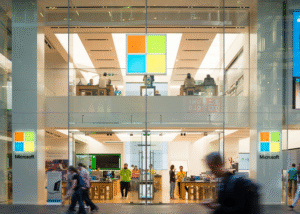The job growth rate in the United States has slowed down in a big way, and it’s all happening just as the country is gearing up to choose its next president. According to the Labor Department, October saw only 12,000 new jobs added to the workforce—significantly lower than the 223,000 jobs added in September. While hiring slowed, the unemployment rate stayed steady at 4.1%. This means that while not many new jobs were created, the same percentage of people are still out of work as last month.
October’s job numbers have a lot of people talking, especially because they are the last official update on the economy before the presidential election. These numbers are important because they give a peek into the health of the U.S. economy. Some people think that the hiring slowdown could affect voter opinions on which candidate will be best for America’s economy.

Why the Slowdown in Hiring?
This drop in job creation didn’t happen for just one reason. There are actually a few different things going on in the economy that made hiring in October more challenging than usual.
Hurricane Havoc
One of the reasons for the slowdown in job growth was the effect of recent hurricanes. Hurricanes are intense storms that bring heavy rain and high winds, and they can be very disruptive to businesses and daily life. When a hurricane hits, many businesses close down to keep people safe. This means people can’t go to work, and employers aren’t in a position to hire new staff or expand.
For example, during a hurricane, construction work often stops. People working on building sites can’t do their jobs in dangerous weather, and this kind of delay can affect job growth in areas hit by storms. Other sectors, like retail, tourism, and even some types of manufacturing, are also disrupted when hurricanes strike.
Strike Standstill
The economy was also affected by strikes in October. Strikes are when workers stop working to protest for better pay, working conditions, or other benefits. If large groups of workers go on strike, this can impact production and services. In October, workers in the manufacturing industry, for instance, went on strike, which resulted in fewer new jobs in that field.
Manufacturing jobs are important because they involve making and producing goods that people use every day. When there are strikes in this sector, it affects the economy’s strength. These strikes in October meant fewer new roles in manufacturing, which contributed to the low number of new jobs added that month.
The Election Impact
Another factor that may have played a role in October’s hiring drop is the upcoming presidential election. Companies may be more cautious about making major business decisions, like hiring a lot of new people, during an election period. Hiring new employees means companies have to spend more money, so some businesses might wait until after the election to see what the economic future looks like.
Elections can sometimes create uncertainty. With two different candidates promising different plans for the country, companies are often unsure which direction the economy will take. They may prefer to wait and see who wins before making big changes.
Where Are New Jobs Being Added?
Even with the slowdown, some areas did see job growth. According to the Labor Department, there was a steady increase in roles in healthcare and government.
- Healthcare: Healthcare is an essential field, with doctors, nurses, and other medical staff working to care for people. Even when other job sectors are affected by things like strikes or bad weather, healthcare is a field that usually keeps growing, as people always need medical care.
- Government Jobs: Government roles also showed steady growth in October. These jobs include positions in local, state, and federal government offices. People in government jobs work to manage public services and keep the country running. This area of hiring can often stay stable because government work is always necessary, whether the economy is strong or weak.
Economists Expected More Jobs
Economists had expected a much higher job growth number for October. According to a poll by Reuters, economists thought there would be around 113,000 new jobs added. The actual number, just 12,000, was a big disappointment. This was a surprise because the economy had been showing some good signs, like low unemployment.
The job growth numbers are important to economists because they give them clues about how strong the economy is. When more jobs are created, it often means businesses are doing well and feel comfortable hiring more people. When fewer jobs are added, it can mean that businesses are being more cautious or that certain parts of the economy are facing difficulties.
Why Are These Numbers Important Before the Election?
The timing of this job report is significant because it’s the last set of job growth numbers before Americans vote for their next president. Many voters look at the economy when deciding which candidate to support, and job growth numbers can influence opinions.
When people hear that fewer jobs were created, they may wonder if the current leadership has been effective or if a change could improve things. This report might sway some undecided voters to pick a candidate they think could boost job creation and strengthen the economy.
The unemployment rate is also a key piece of information. It’s good news that the rate stayed steady, but it’s also worth noting that it didn’t improve. For some people, this could be a sign that the economy has some weak spots.

Looking Ahead: What’s Next for Job Growth?
Many people are hoping that job growth will bounce back after the election and that businesses will start hiring more again. Once the uncertainty around the election settles, companies might feel more comfortable making bigger financial decisions, like hiring new employees.
The good news is that some areas of the economy, like healthcare and government, are continuing to grow. If these sectors keep hiring and the manufacturing industry picks back up after the strikes, we might see a boost in job numbers soon. And if the weather stays calm, there’s a better chance that jobs in construction and other outdoor work areas will increase.
So, while October wasn’t the best month for job growth, there are still reasons to be hopeful about the future.











